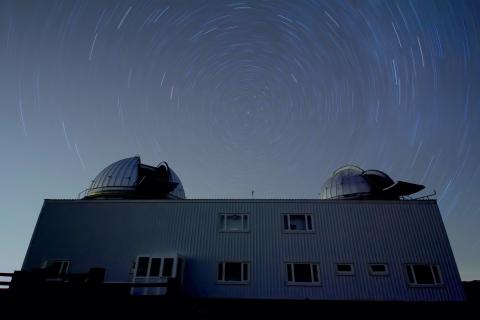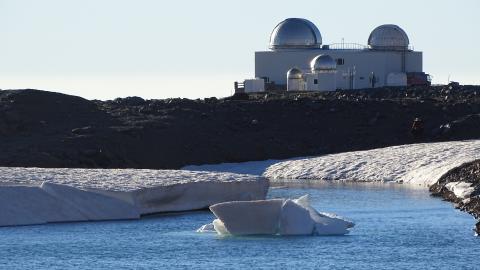




General information
-
Hosting OrganisationObservatorio de Sierra Nevada (IAA/CSIC)
-
AddressLoma de Dilar, Parque Natural de Sierra Nevada, Granada, Spain
-
Contact Info:
-
Phone
-
Emaildireccion.osn@iaa.es
Description
The Observatorio de Sierra Nevada (OSN) is a high mountain observatory located at 2896m altitude in the Sierra Nevada National Park (Granada, Spain). It belongs to the Instituto de Astrofísica de Andalucía (IAA-CSIC), which operates and manages it. To compensate for the limited access to observing time at larger observatories, the OSN offers excellent flexibility to serve programs that require rapid response or intense temporal coverage, either in terms of sampling or extension. Its southernmost high-altitude location in continental Europe and the dry climatic conditions of Sierra Nevada make the OSN an excellent place for carrying out astronomical observations and other experiments and studies, like mid-upper atmosphere sounding and test bed for external instrumentation. For this, secondary facilities complete the available infrastructure in addition to the main building.
Main equipment or Facilities
The OSN has a main building that shelters the living quarters and two optical telescopes with Ritchey-Chrétien configuration and two Nasmyth foci:
- A 1.5 m telescope (T150), equipped with a commercial 4Mp CCD Peltier Camera and the Spectrograph (ALBIREO). ALBIREO is under commissioning after a recent technical update.
- A 90 cm telescope (T90), equipped with a commercial 4Mp CCD Peltier Camera and a polarimeter (DIPOL1).
Furthermore, the smaller outbuildings contain:
- MIMA, a Fabry-Perot imaging interferometer measuring atmospheric airglow.
- Five high-sensitivity robotic CCD cameras monitoring the sky for meteors and fireballs within the SMART Project (University of Huelva).
- GPS Topo-Iberia station (University of Barcelona) is a GPS station used for integrated topography and 4-D evolution studies.
- A DIMM seeing monitor.
- An All-Sky Transmission Monitor, four Sky Quality Meters and a TESS-4C sensor from the IAA Sky Quality Office.
Projects under Development
A project to upgrade and reactivate the 60 cm infrared telescope, which has been inactive for many years, is currently under consideration.
Technology Capabilities
The OSN technical support and maintenance are provided by its staff and the IAA’s Instrumental and Technological Development Unit (UDIT) across various areas:
- Electronics: control of the telescopes, domes, and instruments developed in-house, complemented by the design and development of circuits, power electronics or PCBs.
- Mechanics: development of mechanical structures, optomechanics, high precision positional systems and thermal analysis of mechanical components.
- Optics: optical design of instruments and components and regular maintenance of the telescopes’ mirrors and instrument optics.
- Software: maintenance of data archives and control software for instrumentation.
Summary of Research Services
The OSN provides astronomical observations in the visible using the CCD detectors, the polarimeter and the spectrograph at both telescopes. The OSN Time Allocation Committee (TAC) evaluates the proposals for observing time twice a year. In addition to standard open-time proposals, the TAC evaluates Target of Opportunity proposals: unpredictable observations requiring a quick response. A small fraction of time is also available to be assigned by the OSN director to unexpected and urgent observations of high scientific interest (Director’s Discretionary Time). There are three possible observing modes: service, remote and visitor. OSN also provides essential maintenance of instruments and experiments hosted at OSN in collaboration with other institutions and astronomical observations for master students of external universities.
Procurement process
As part of the Instituto de Astrofísica de Andalucía (IAA/CSIC), the OSN procurement process is governed by the Royal Legislative Decree 3/2011, November 14th, which approved the consolidated text of the Spanish Law of Public Sector Contracts.